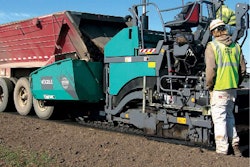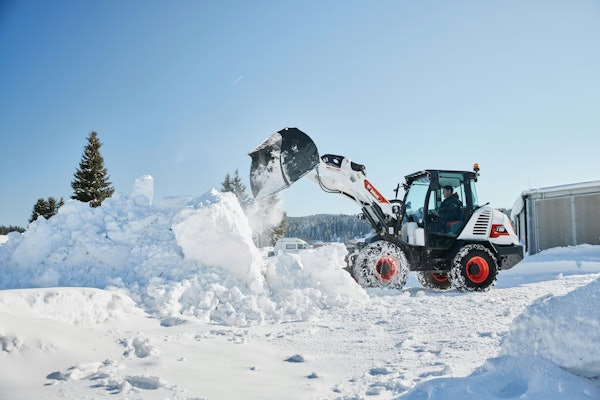After a hard day’s bidding

As always, the state of current used equipment auction prices is a matter of perspective. Making my way through the Ritchie Bros. Auctioneers reception after the second day of their six-day Orlando auction, two perspectives were evident when I asked the question, “how are prices?”
“Good” said several sellers.
“High” said a contractor, making a face.
The February Florida auctions, simply because of the shear volume of equipment sold at live events such as those by Ritchie, Yoder and Frey Auctioneers, Alex Lyons & Son – and this year, IronPlanet – act as a pricing bellwether for the year. For their part, Ritchie had more than 10,400 items on the block, beating its previous record of 8,600 items. They sold a personal best of $203 million, with 36 percent of the equipment going to buyers outside the country.
Non-U.S. buyers have always been a driving force in the Florida auctions, and it’s widely held that overseas buyers kept used equipment prices from tanking even more than they did in the past few years.
Ritchie says they’re seeing demand rising in Australia, the Middle East, Latin America and countries east of Asia. Last year, while Canadians were the largest buyer of U.S.-sold equipment in Ritchie auctions, Mexican bidders bought $100 to $120 million in equipment, and buyers in Australia and Columbia each bought between $10 and $20 million. Right now, “pricing in Australia is significantly higher than anywhere in the world,” says Rob Mackay, Ritchie president, with buyers nabbing scrapers, rock trucks and wheel loaders.
Non-U.S. buyers have always been a driving force in the Florida auctions, and it’s widely held that overseas buyers kept used equipment prices from tanking even more than they did.
This dependence on foreign sales has people openly worried, because a schism is looming in the global market. Tier 4 machines require ultra low sulfur diesel, and many traditional equipment markets don’t have ULSD, nor will they likely have it in two to five years, when used Tier 4 machines start cranking into the market. This means that key traditional migration patterns for this equipment will be interrupted. (More on this in upcoming issues.)
One broker I talked to sees this two-tier market creating a glut of U.S.-originated used equipment in three years. And this quote from January’s dealer magazine Construction Equipment Distribution caught my eye. Commenting on what he sees ahead, Steve Branson, president of Phoenix-based Road Machinery, said: “When these Tier 4 machines come into the used market, the export market is going to have shrunk – and today the export market is the market.” He continues: “There probably isn’t an equipment dealer in the country that isn’t thinking, ‘What the hell are we going to do with this stuff in a few years?’”
There’s the hope that the long-deferred construction recovery will be in full swing by then, creating additional demand. But some today are questioning whether even that will be enough.














